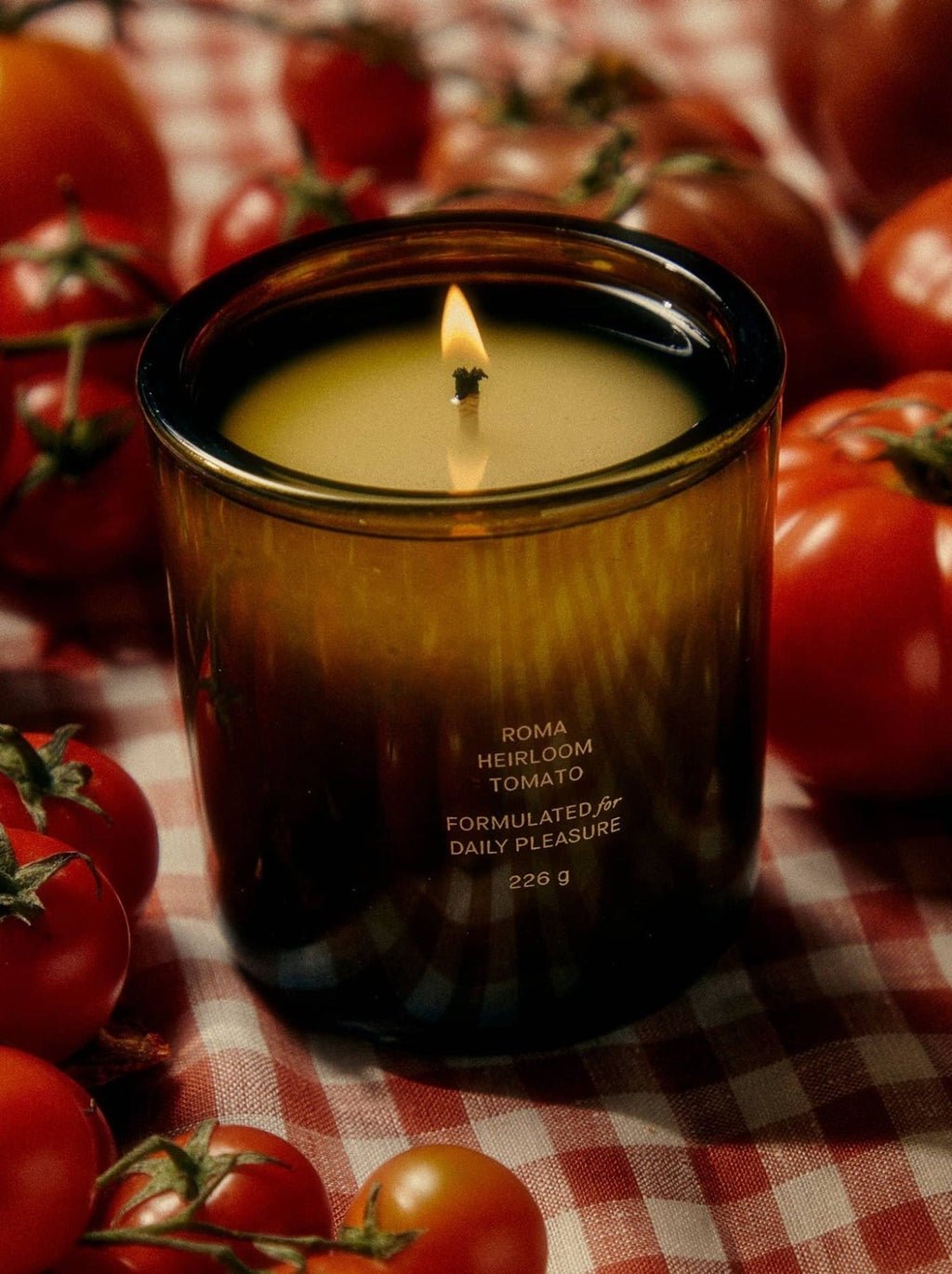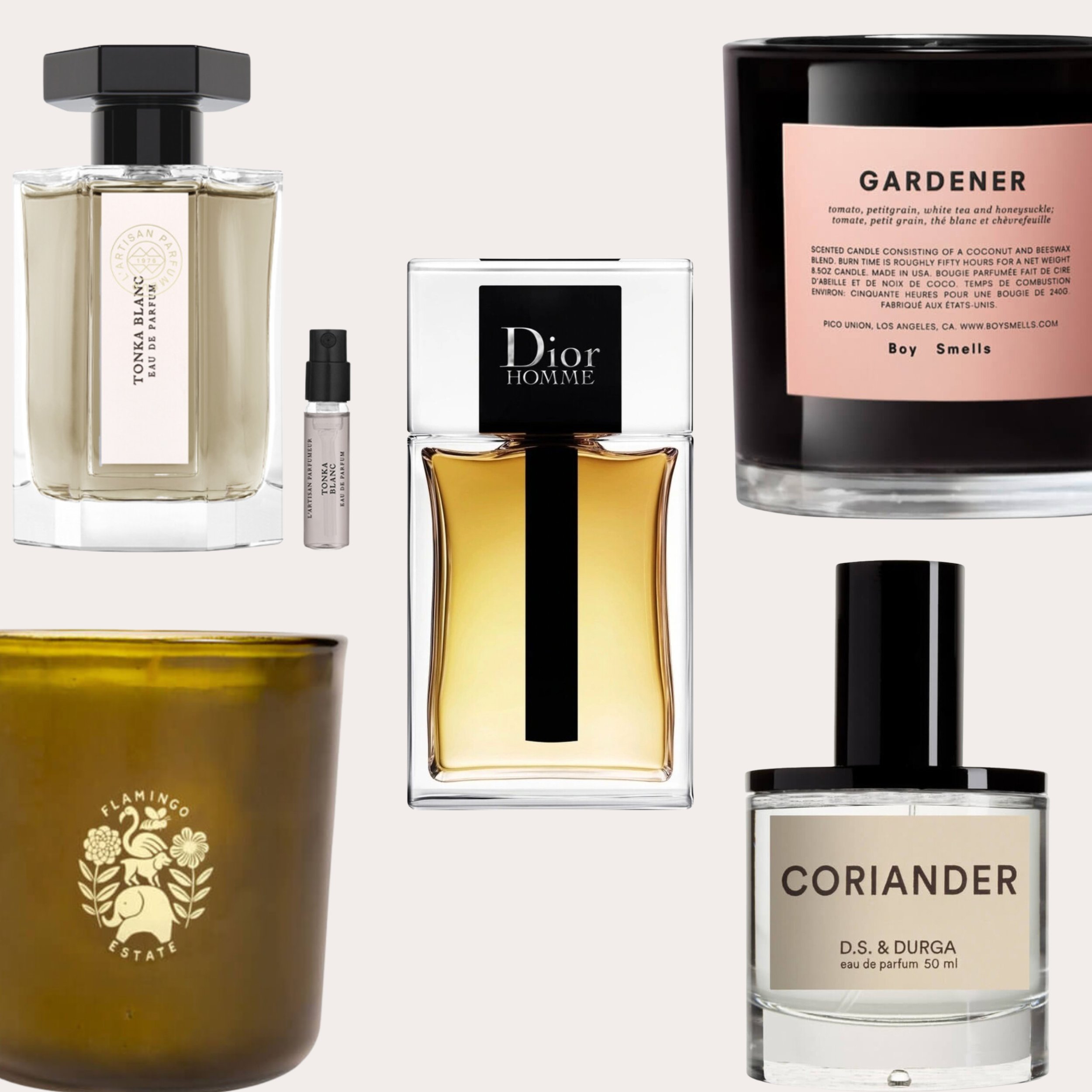Why the scent of vegetables is usurping our long-term affair with fruits and flowers
When I first dipped my toe into the world of fragrance, I gravitated towards perfumes that smelled like cakes à la Fantasy by Britney Spears, Candy by Prada and Viva La Juicy by Juicy Couture. Scents which, today, would make my nose twitch and my toes curl. Yet, like my taste buds, my nostrils have matured to a point of preferring the richer, more earthy aromas, rather than the sickly-sweet scents. While the perfume or candles we’ve reached for in the past tended to be on the more fruity-floral side, there’s a local competitor challenging its appeal: enter vegetables.
Unusual fragrances are, at once, intriguing and luxurious.
We long for scents that remind us of a burning fire, a trip to the library, your skin in summer. Scents that are intangible and unconventional. Which is why I am all in favour of the pantheon of vegetable inspired fragrances making their way into our homes and onto our pulse points. At first, it sounds striking - the use of cauliflower in a scent, for example - but it turns out vegetables can create a variety of fragrance notes.
Vegetal aromas in general are taking over as the savoury appeal adds a more complex nuance to your home or body. Oprah even listed Flamingo Estate’s Heirloom Tomato candle in her favourite things one year. But, why? Well, there’s a deeper richness to smelling like a root vegetable or something that grows on a vine. And they’re not the only brand paying favour to the raw, vegetable ingredients.
Jo Malone’s Green Tomato Leaf candle is said to be “tangy and evocative” but as those keen-eyed green-fingered readers might note, tomatoes are technically a fruit. Still, that wouldn’t stop the consensus that tomatoes certainly play on the more savoury spectrum of the palate. It’s also clearly a popular ingredient, as Malin and Goetz and Boy Smells have a tomato-based scent in their arsenal. It seems that the fresh and zingy scent they can produce in fragrance might be enough to have you pushing your citrus-based scents to the side. Jo Malone’s scents have always relied on elements of the natural world - which is actually the point that draws the customers in. The scents are versatile, and buildable. The Earl Grey & Cucumber perfume has been a go-to for a fresh summer scent since its inception.
Tom Ford - a key brand for niche yet delectable fragrances - makes up part of this gastronomic-beauty fusion. Noir De Noir is composed of black truffle and saffron. And, with over 6.8k reviews in the 4.5 ranking on Google, it appears the concoction is a true success coming close to its predecessor, Black Orchid, in its high regard.
L'Artisan Parfumeur hosts a body of fragrances that all evoke elements of nature, aligning with its founder Jean Laporte’s love of the natural world. The Le Potager collection has brought forth “revealing notes of vegetables never before used in perfumery.” The fragrance, Tonka Blanc, which was created by perfumer Alexandra Carlin uses roasted cauliflower which produces a certain muskiness. Paired with almond, it’s an artfully balanced sweet and savoury scent. Carlin actually took inspiration from the gastronomical world for this, noting that chefs were using cauliflower in desserts. Her gourmet appreciation allowed her to create “the first perfume on the market to contain a natural vegetable extract.”
Carrot seed is also a popular element, featuring in perfumes such as Dior Homme by Christian Dior and Volutes by Diptyque. Its woodiness can balance out the more powdery, sweet elements of a fragrance.
The potential is there for many vegetal elements - D.S & Durga even have a perfume named after its starring ingredient, Coriander - such as fennel, leek (yes, even that onion-like vegetable we find in our soups), artichoke and celery.
A natural muskiness and earthiness is induced through palatable concoctions in fragrance, and it feels more adult than something that’s powdery, and fruity. It’s also more sustainable as the key notes can be naturally derived rather than created in a lab which is important as more people pull away from synthetic elements.
Sweet scents are still extremely popular though. Baccarat Rouge 540’s nails remain dug into the skin of many of the TikTok girlies with over 517.4M views and counting. Similarly, Daisy by Marc Jacobs’s cult status remains. And, it’s not actually as novel as it sounds. Vegetables have been used for a long time in beauty products such as skincare - think Aesop’s Parsley Seed range - but also fragrance. It just wasn’t advertised. The marketing wasn’t direct, but perhaps, by the consumer’s changed reaction to embracing vegetables, brands have realised that leading with natural world works.
We’re all finding that the more natural the product, the better it is for our skin, hair and now the nostrils of others. Embracing beauty gifts from nature, such as algae or even snail mucin (shout out to Korean skincare for enlightening us on nature’s potential) has been the best decision many of us have made.
It’s not just novelty; these scents are complex, balanced and completely wearable. Having a scent akin to the aromas of a walk through the garden - or a Sunday roast - is enough to convince me.
Words - Bailey Petts




